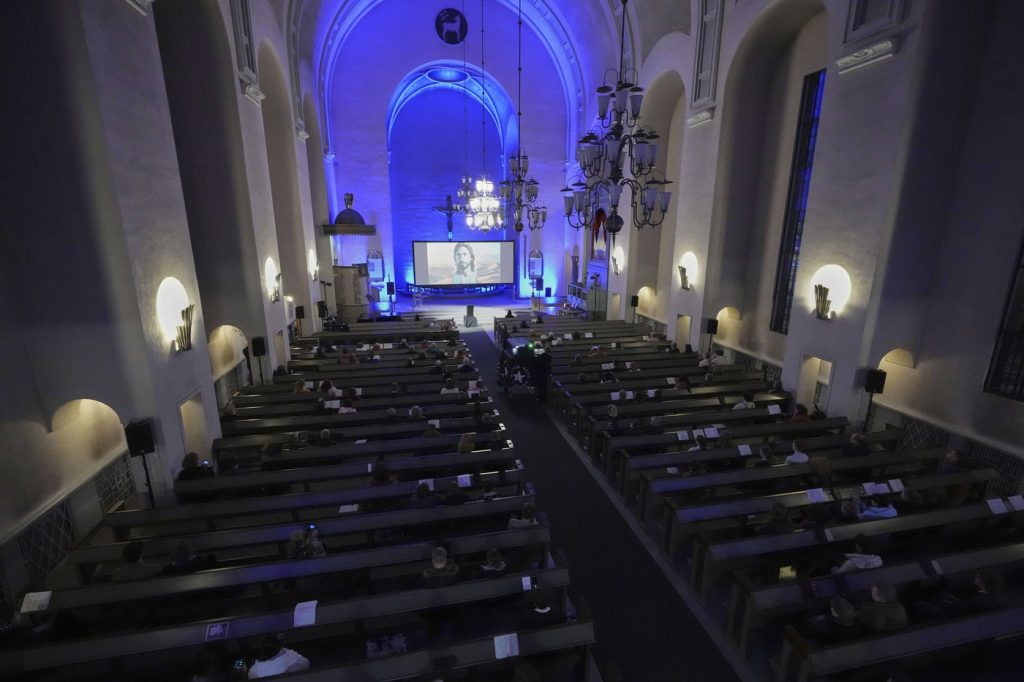In a groundbreaking event, St. Paul's Lutheran Church in Helsinki, Finland, hosted what is believed to be the first church service predominantly created by artificial intelligence (AI) on March 4, 2025. The service featured AI-generated visuals, texts, and music, including avatars of Jesus, dressed in traditional robes, and Satan, depicted in contemporary attire with a sinister expression and high-pitched voice.
The experimental service drew an unexpected crowd of over 120 attendees, significantly surpassing the usual attendance for a weeknight service. Visitors included not only locals but also foreign individuals who admitted their limited proficiency in Finnish, highlighting the service's appeal to a diverse audience.
Rev. Petja Kopperoinen, the brain behind the initiative, emphasized that while discussions surrounding AI typically focus on its future potential, the technology is currently capable of performing tasks previously thought to be a decade away. The congregation found the AI-led service entertaining and innovative, yet they acknowledged a lack of personal connection compared to traditional, human-led worship. Worshipper Taru Nieminen remarked that, while the service was enjoyable, it felt “distant” and not like a real Mass, indicating a desire for the warmth of human interaction.
In contrast, Rev. Kari Kanala, vicar of St. Paul's, echoed similar sentiments, stressing the necessity of human warmth in worship. This sentiment of caution towards AI integration in religious contexts is shared by many religious leaders worldwide, as they ponder AI's potential role in attracting new worshippers.
Before this Finnish experiment, various churches globally had also begun incorporating AI into services. Noteworthy among these attempts was an AI-led service in Germany and an avatar of “Jesus” in a Swiss chapel that interacted with the faithful. St. Paul's church has a history of innovation, previously integrating sports screenings and art festivals into its programming, making the introduction of AI a logical next step.
Kopperoinen invested weeks using various AI tools such as OpenAI's ChatGPT-4o for sermon writing, Suno for composing pop-like tunes, and Synthesia for generating video avatars from existing footage. These digital avatars were blended into the live elements of the service, including congregation singing accompanied by live organ music. Kopperoinen described the eerie sensation of seeing himself onscreen delivering words he didn't say in reality.
Nonetheless, the boundaries of AI use were clearly defined during the service. Essential religious rites like sin forgiveness and the Eucharist were not performed by AI. Human oversight was key, given concerns about the stereotypes often reflected in AI-generated content. For example, ChatGPT initially resisted producing a dialogue between Jesus and Satan until Kopperoinen identified himself as a Lutheran pastor, highlighting existing sensitivities around religious matters.
The incorporation of AI in religious services has raised discussions about the implications for both the environment and ethics. Concerns were voiced over the environmental costs of powering AI systems, tying into the Finnish Lutheran church's broader mission to uphold stewardship of creation. Critics within the community have expressed unease about utilizing AI for entertainment while paradoxically facing environmental challenges.
Opinions varied among attendees regarding the service's execution. Some felt the presentation resembled a performance rather than genuine worship, with speeches delivered at speeds that could be challenging to follow. Yet, despite these critiques, many found enjoyment in the catchy AI-composed songs, albeit noting a lack of the emotional depth that human musicians bring to their performances.
Ultimately, both Kopperoinen and Kanala recognize the importance of a human element in religious practice. AI, as noted by Kanala, lacks the ability to empathize or provide guidance in a spiritual context, underscoring the notion that genuine ministry is rooted in human touch. The exploration of AI's role in church settings is seen as an essential step toward responsibly integrating technology into religious life. As discussions about AI evolve, church leaders aim to shape the dialogue around its usage and ethical implications in their communities.










